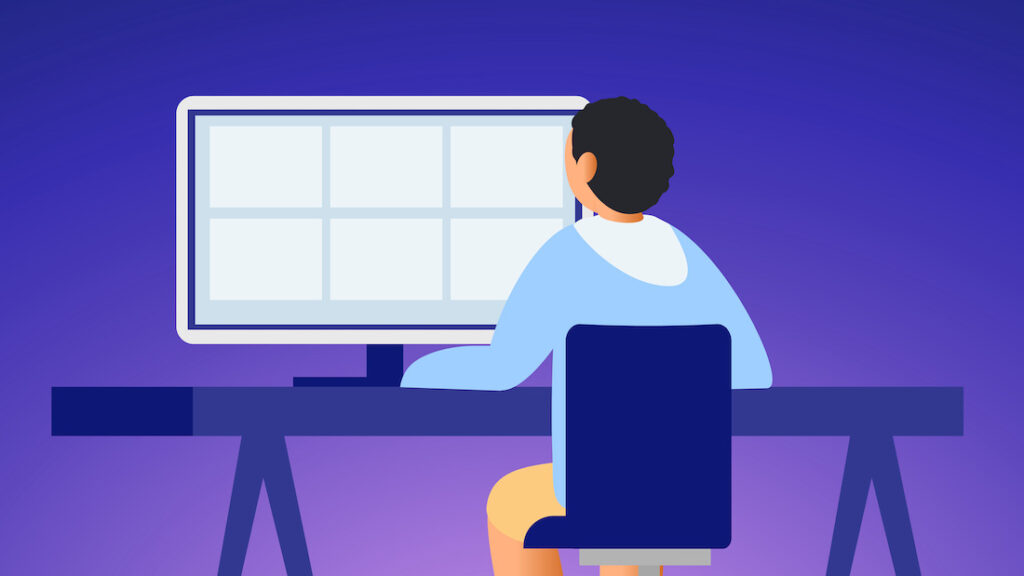
Today’s teens don’t know what it’s like to wait an entire week for the next installment of their favorite show and then gather around a huge piece of furniture in the family room to watch it. They also don’t know what it’s like for communication to be limited to their homes, courtesy of a landline, nor do they know what it’s like to wait two weeks to see the photos from Saturday night.
And while we’re waxing nostalgic for days gone by, every parent reading this is about to be blown away by this next fun fact — our teenagers have never known a world without social media. Unlike generations past, who built their constitution by standing up to bullies on the playground and being latchkey and carefree, platforms like TikTok, Instagram, and Snapchat are the stage on which our children’s lives are playing out.
On the surface, access to social media means checking in on what their friends are up to and posting pictures of their weekend activities. And if that were the beginning and the end, it’s relatively harmless — but it’s not. The fact is there is plenty of evidence to suggest that social media use not only impacts teen brain development but is also directly linked to depression and sleep disturbances.
Spikes Sensitivity to Social Feedback
In a recent Sleepopolis survey of 300 respondents ranging in age from 18 to 21, a whopping (but not at all surprising) 82 percent indicated that they regularly checked their social media before bed. And while innocuous activity, like looking at a friend’s post or some new photos, might be just fine, the problem arises when teens’ social media activity is more about seeking approval.
Earlier this year, researchers at the University of North Carolina at Chapel Hill shared the results of a 3-year longitudinal study that looked specifically at middle school students in North Carolina and the impact social media had on their brain development. (1) Ultimately, researchers found that social media usage caused adolescents to be hypersensitive to the social feedback received from their peers.
And the science behind this is relatively simple, positive feedback gives teens a one-two punch of oxytocin and everyone’s favorite neuromodulator, dopamine (aka the happy hormone), ultimately making them hypersensitive to social rewards in the form of likes and comments or what they perceive as attention and admiration. (2) (3)
And the human brain is the human brain, so anyone playing devil’s advocate would likely say it’s the same for adults, and rightly so, but there are two crucial differences. First, most adults are mature enough and secure enough not to put a lot of importance on feedback from others (or social rewards). Second, anyone over the age of 25 has a more mature prefrontal cortex, so they’re far more equipped to regulate their emotional responses to the social rewards that accompany social media use. (4)
Taxes on Mental Health
In the digital age, social media can be an excellent tool to help teens build their social networks. Unlike Gen X, who were limited to those in school, their class, or neighborhood, today’s teens can make friends across the country and stay connected.
And while there is some good to be found in social media use, the other side of the coin reveals that these platforms can have a detrimental effect on teen mental. Granted, how the teen uses the platform is what ultimately determines its net impact, but if we’re talking about middle school and high school-age kids, social media use more likely revolves around like counts, positive comments, and more nefarious goings on like peer pressure bullying, negative influences on body image, and the comparison trap. (5) Taken altogether, these things can have a profound influence on their mental health, leaving them vulnerable to depression, anxiety, thoughts of self-harm, and even suicidal ideation.
And this shouldn’t come as a surprise to anyone paying attention; eye-opening statistics regarding the state of teen mental are making headline news year after year.
- In 2019, the New York Times reported that 13 percent of adolescents indicated they’d had a major depressive episode — a 60 percent increase from 2007. (6)
- In 2022, The Centers for Disease Control and Prevention reported that while suicide rates for people ages 10 to 24 remained relatively stable from 2000 to 2007, those rates skyrocketed by 57 percent between 2010 and 2018. (7)
- At the start of 2024, CBS News ran the headline: Nearly a Third of Teen Girls Say They Have Seriously Considered Suicide. The article indicated that 1 in 3 high school girls in the U.S. have seriously considered attempting suicide, and more than half of teen girls (57 percent), reported feeling “persistently sad or hopeless” — a historic high. (8)
In case you were wondering, there’s plenty of evidence to corroborate as much.
One study published in JAMA Psychiatry showed that teens who use social media for upwards of three hours per day were more likely to display behaviors consistent with mental health issues. (5) More specifically, they internalized and externalized their emotions. For those who internalized their feelings, social withdrawal and difficulty coping with depression and anxiety were commonplace. While for those externalizing, aggression and disobedience were standard.
Another interesting study showed a bi-directional relationship between social media use and depression and suicidality among adolescents. (9) Yet another found that tech-based social comparison and feedback-seeking were associated with depression among teens, regardless of frequency of use. (10)
And while there is a bi-directional relationship between depression and social media use, so too is there a bidirectional relationship between depression and insomnia. (11).
Speaking of sleep…
Causes Poor Sleep Quality and Shorter Duration
With 95 percent of teens saying they use some social media and about a third saying they use it constantly, social media use has become a known sleep disruptor. (12) And there’s no mystery here; the more time your teen spends engaging on social media, the less time they have for other things. And, like most people, sleep is the first thing on the chopping block.
Beyond a conscious decision to trade sleep in for digital socializing, studies have shown that frequent social media use in adolescents often leads to delays in bedtime, difficulty falling asleep, shorter sleep duration, and poor sleep quality. (13) And as you might have guessed, the usual suspects here are blue light exposure meddling with their melatonin production, the sheer frequency of alerts and notifications, and, of course, the emotional toll of their interactions. (14)
We should note that teens often experience a temporary shift in their circadian rhythms at puberty (sometimes by 2-3 hours), so we know they’re not necessarily hitting the hay at 10 a.m., but spending that time on social media is likely only to compound their sleep and mental health issues. (15)
Social Media Scrolling Rewires Their Brain
While all of the above is plenty of cause for concern, the effect social media has in terms of rewiring the teen brain is especially concerning. Multiple studies have shown that social media use profoundly affects focus, memory, and cognitive performance.
Digging a little deeper, we found that while some studies show that media multi-tasking leads to poor performance on cognitive tasks, others have found that media multi-tasking can predict attention deficits in early adolescents. (16) (17) Researchers posit that bite-size pieces of information and a refreshing feed that holds the promise of endless new content are not only responsible for impaired cognitive performance but also shrink parts of the brain responsible for maintaining attention.
Moreover, research has also shown that memory deficits can be linked back to social media use. One study tackled something that most people now do — recording events with their phones. (18) Ultimately, the study found that those who viewed the event through the lens of their smartphone were more likely to exhibit a memory deficit than those who experienced the event with no recording. Essentially, by externalizing an experience, the brain doesn’t deem the information important enough to hold on to, so it doesn’t.
Dr. Katherine Hall, a sleep psychologist at Somnus Therapy, says, “While ‘rewiring the brain’ may sound dramatic, there’s solid science behind the notion that heavy digital use can affect areas of the brain linked to attention, decision-making, and emotional regulation.” However, she cautions, “Let’s not demonize technology—it’s here to stay—but setting boundaries on usage time can prove invaluable.”
How To Protect Teens’ Sleep From Social Media
Dr. Terra Ziporyn Snider, Executive Director and Co-Founder of Start School Later, Inc., says, “Social media also has the potential for good — including reinforcing messages about the value of healthy sleep and providing tools to encourage healthy sleep. So it’s important not to throw out the baby with the bathwater.” So while most parents are fighting a losing (and unwelcome) battle to eliminate social media from their teen’s orbit, Snider says a better approach would be to manage how and how often they use it. “If something is here to stay, and social media likely is, we’re better off finding ways to use it to our advantage rather than issuing unrealistic proclamations that ask people to do the impossible,” she says.
Open the Lines of Communication
“Many studies draw a line between extensive social media use and increased anxiety or depression in teens,’” says Hall. “It’s a complex correlation, and as parents, it’s vital to keep the lines of communication open and encourage real-world connections and activities that boost mental health.”
So, instead of talking about the negatives of social media from a soapbox, parents might consider opening the lines of communication and talking to their teens about the good and the bad. Once you understand how your teen feels about social media and what they perceive as positive or negative, you can partner with them to make a plan for responsible use.
Hall adds, “Social media can amplify a teen’s natural sensitivity to peer feedback, which can lead to increased stress and anxiety. For that reason, parents should consider engaging their child in regular conversations about their online interactions and remind them that social media is a curated reality—not a mirror of one’s worth.”
Moreover, Hall adds, “Beyond sleep, social media can impact teens’ self-esteem and expose them to cyberbullying. So, parents should always encourage open dialogues about these issues and be prepared to step in and guide their child when necessary.”
Power Down — As a Family
“Social media, especially before bed, can interfere with a teen’s sleep,” says Hall. “And it’s not just the blue light; the content they view and the nature of their interactions can stir emotions that make it hard for the mind to wind down.”
To mitigate the effects of these things on your child’s sleep, Hall suggests “Making a family pact to power down all devices an hour before bedtime, and replace scrolling with a calming pre-sleep ritual, like reading or a warm bath.”
Try Tech-Free Zones
Tech-free zones are an excellent way to help your child take a break from their digital lives. And this doesn’t have to be a big deal; the rule should be no phones at the dinner table, no phones during family time, and maybe even no phones after a certain hour.
Establish A Phone Drop-off Box
Parents seeking to curb their teen’s social media and smartphone use before bed might consider a drop box for their phones. And this doesn’t have to be complicated or expensive a simple box where your teen can deposit their phones each night and pick them up each morning is plenty.
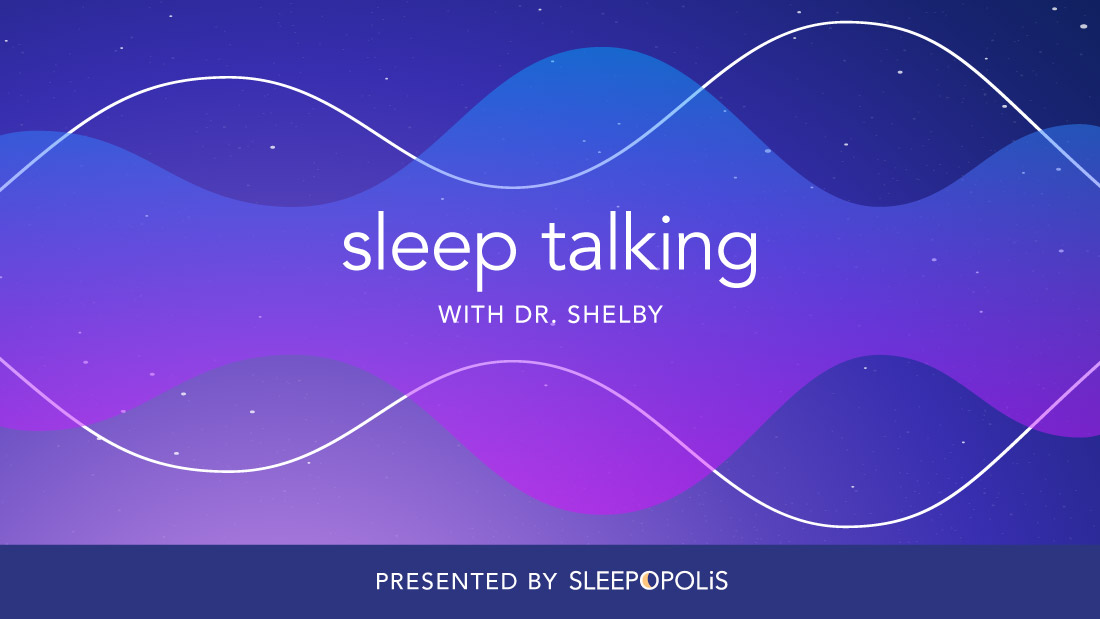
Sleepopolis Has Launched a Podcast! Check Out “Sleep Talking With Dr. Shelby”
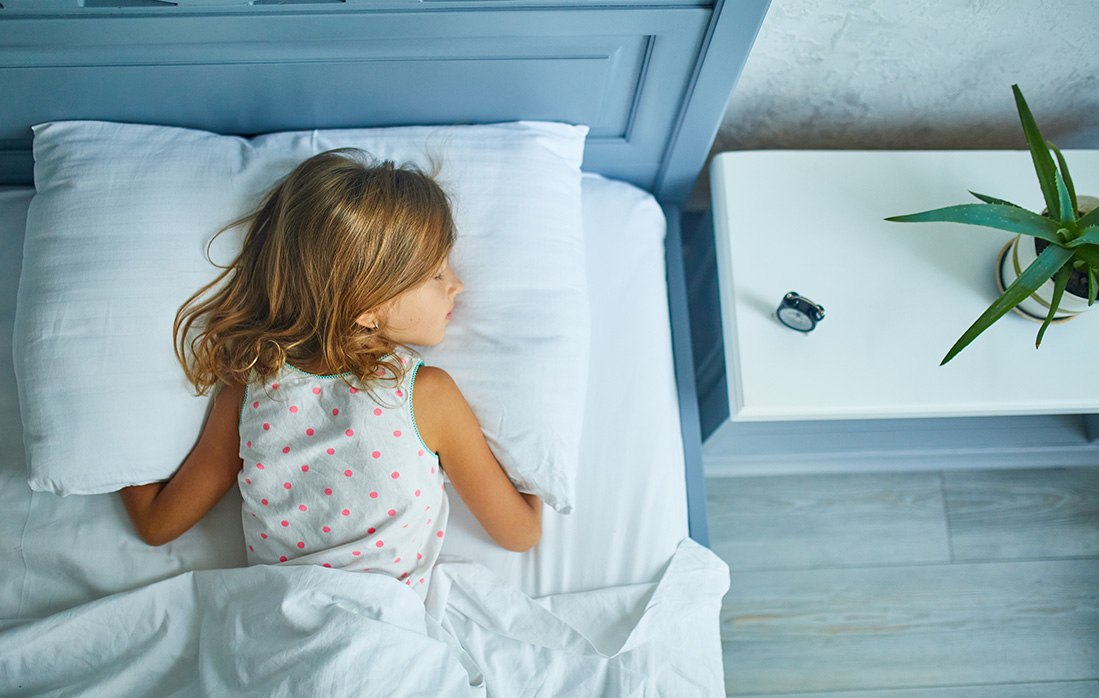
Almost Half of Parents Have Given Their Children Melatonin to Sleep, New Survey Shows
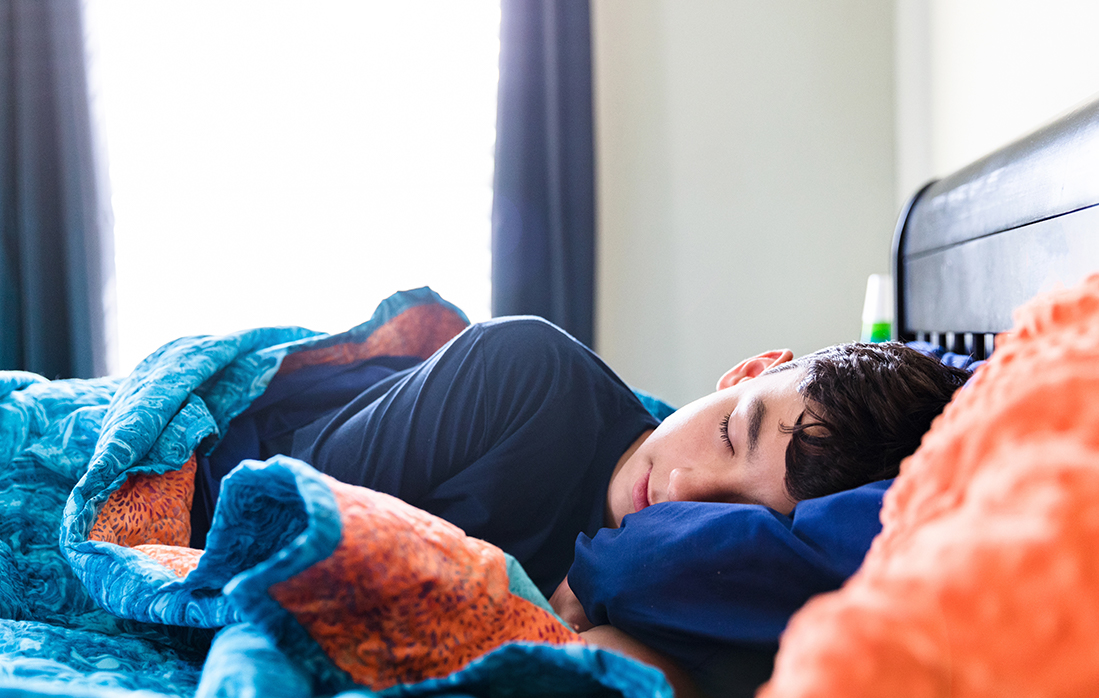
Are Extracurriculars to Blame For Kids’ Poor Sleep Schedules? Parents Seem to Think So
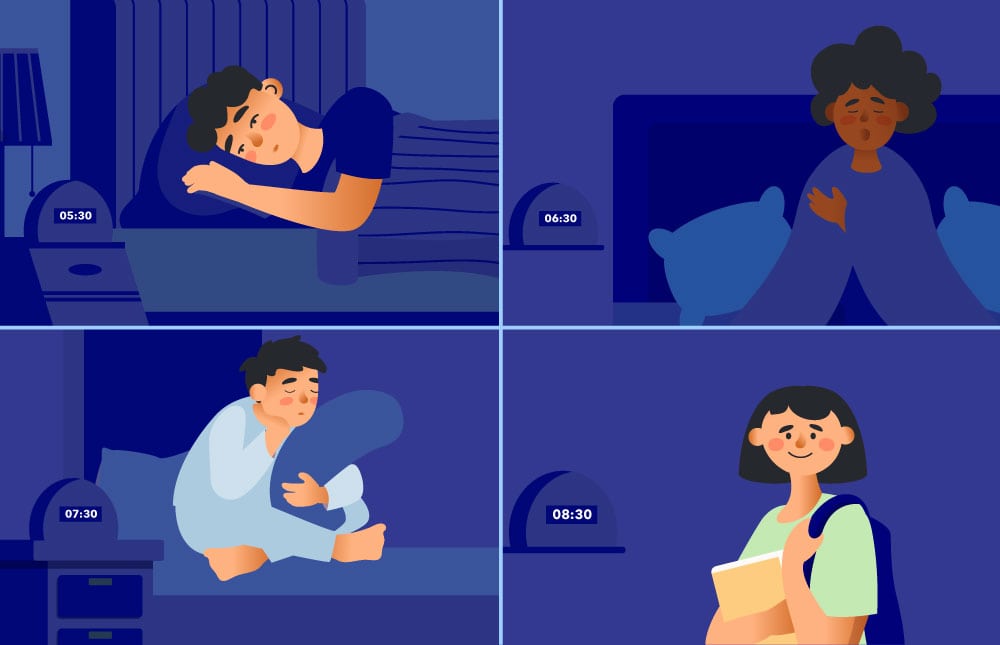
How Later School Start Times Are Going, According to Real Teens and Their Parents
Sources
1. Maza MT, Fox KA, Kwon S, et al. Association of Habitual Checking Behaviors on Social Media With Longitudinal Functional Brain Development. JAMA Pediatr.
2. Abrams, Z. (2023, August 3). Why young brains are especially vulnerable to social media. https://www.apa.org/news/apa/2022/social-media-children-teens
3. Klanker M, Sandberg T, Joosten R, Willuhn I, Feenstra M, Denys D. Phasic dopamine release induced by positive feedback predicts individual differences in reversal learning. Neurobiol Learn Mem. 2015;125:135-145. doi:10.1016/j.nlm.2015.08.011
4. Arain M, Haque M, Johal L, et al. Maturation of the adolescent brain. Neuropsychiatr Dis Treat. 2013;9:449-461. doi:10.2147/NDT.S39776
5. Riehm KE, Feder KA, Tormohlen KN, et al. Associations Between Time Spent Using Social Media and Internalizing and Externalizing Problems Among US Youth. JAMA Psychiatry. 2019;76(12):1266–1273. doi:10.1001/jamapsychiatry.2019.2325
6. Barbaro, M., Johnson, M. S., Novetsky, R., Tan, S., Willens, P., Benoist, M., Lozano, M., & Wood, C. (2022, August 30). Inside the adolescent mental health crisis. The New York Times.
7. National Vital Statistics reports – Centers for Disease Control and … (n.d.-a). https://www.cdc.gov/nchs/data/nvsr/nvsr69/nvsr-69-11-508.pdf
8. Tin, A. (2023, February 14). Nearly a third of teen girls say they have seriously considered suicide, CDC survey shows. CBS News. https://www.cbsnews.com/news/teen-girls-suicide-depression-mental-health-cdc-survey/
9. Vidal C, Lhaksampa T, Miller L, Platt R. Social media use and depression in adolescents: a scoping review. Int Rev Psychiatry. 2020;32(3):235-253. doi:10.1080/09540261.2020.1720623
10. Nesi J, Prinstein MJ. Using Social Media for Social Comparison and Feedback-Seeking: Gender and Popularity Moderate Associations with Depressive Symptoms. J Abnorm Child Psychol. 2015;43(8):1427-1438. doi:10.1007/s10802-015-0020-0
11. Marino C, Andrade B, Montplaisir J, et al. Testing Bidirectional, Longitudinal Associations Between Disturbed Sleep and Depressive Symptoms in Children and Adolescents Using Cross-Lagged Models. JAMA Netw Open. 2022;5(8):e2227119. doi:10.1001/jamanetworkopen.2022.27119
12. Social Media and youth mental health – hhs.gov. (n.d.-b). https://www.hhs.gov/sites/default/files/sg-youth-mental-health-social-media-advisory.pdf
13. van den Eijnden RJJM, Geurts SM, Ter Bogt TFM, van der Rijst VG, Koning IM. Social Media Use and Adolescents’ Sleep: A Longitudinal Study on the Protective Role of Parental Rules Regarding Internet Use before Sleep. Int J Environ Res Public Health. 2021;18(3):1346. Published
14. Fobian AD, Avis K, Schwebel DC. Impact of Media Use on Adolescent Sleep Efficiency. J Dev Behav Pediatr. 2016;37(1):9-14. doi:10.1097/DBP.0000000000000239
15. Gradisar, M., Kahn, M., Micic, G. et al. Sleep’s role in the development and resolution of adolescent depression. Nat Rev Psychol 1, 512–523 (2022). https://doi.org/10.1038/s44159-022-00074-8
16. Firth J, Torous J, Stubbs B, et al. The “online brain”: how the Internet may be changing our cognition. World Psychiatry. 2019;18(2):119-129. doi:10.1002/wps.20617
17. Susanne E Baumgartner and others, The Relationship Between Media Multitasking and Attention Problems in Adolescents: Results of Two Longitudinal Studies, Human Communication Research, Volume 44, Issue 1, 1 January 2018, Pages 3–30, https://doi.org/10.1093/hcre.12111
18. Diana I. Tamir a 1, a, 1, b, c, d, AbstractPeople increasingly use social media to record and share their experiences, Bowman, L. L., Dietz, S., Fried, C. B., Gaudreau, P., Nigro, G., Sana, F., Wilson, T. D., Barasch, A., Diehl, K., Hembrooke, H., Henkel, L. A., Killingsworth, M. A., … Lambert, N. M. (2018, February 22). Media usage diminishes memory for experiences. Journal of Experimental Social Psychology. https://www.sciencedirect.com/science/article/abs/pii/S002210311730505X
19. Dr. Katherine Hall. Email Communication. August 14, 2024.
20. Dr. Terra Ziporyn Snider. Email Communication. August 14, 2024.



























